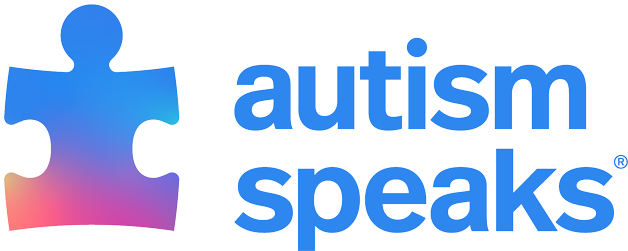How do we teach our autistic child to listen?
By Child Psychologists Rebecca Hellenthal and Megan NorrisThis response is by child psychologists Rebecca Hellenthal (left) and Megan Norris, of Nationwide Children's Hospital Child Development Center and Ohio State University. The hospital and university are among the 14 sites in the Autism Speaks Autism Treatment Network.
My son is on the autism spectrum and gets frustrated when he can’t control the conversation. He’ll start saying "enough" and pouting. I’ve tried asking him to raise his hand when he wants to speak. But he gets frustrated when I respond by asking him to let the other person finish. When I give him the opportunity to speak, often he just makes something up or says something that makes no sense. I’ve been unable to convince him that we can learn by listening to people. Advice appreciated.
Thank you for your question. Many people affected by autism have difficulty mastering conversation skills. This can prove extremely frustrating, both for those on the spectrum and their conversation partners.
Improving skill for back and forth conversation
This is a great topic to discuss with your son’s behavioral therapist, speech therapist and/or special education teacher. Ideally, you want to work with them to design a personalized support and learning program for your son. Meanwhile, you can try several strategies at home.
Three-step approach to address behavioral challenges:
- Assess the problem (i.e. figure out the person’s difficulties and strengths)
- Teach new skills in a supportive way
- Practice these new skills.
So you might start by gathering information about what your son does well in a conversation and what is hard for him. For instance:
- Does he do better when a conversation centers on one of his favorite topics, but shows little interest in other subjects?
- Is he good at starting conversations, but not listening to someone reply?
- Does he look at his conversation partner when he speaks? When the other person speaks?
- Does he respond on topic when another person asks his opinion or otherwise tries to engage him in a discussion?
Having a list of strengths and areas for improvement can help you clarify the goals you set for your son and provide him with the feedback he needs along the way.
Practicing conversation skills
For instance, it sounds like your son enjoys talking to others. That’s definitely a strength. At the same time, it sounds like he has difficulty when he is not the one talking. To improve his listening and responding skills, try practicing with a sympathetic third person so that you can help your son come up with a comment or question about what the other person said. For example:
Friend: “I just saw the new Avengers movie.”
You to your son: “What might you ask [friend’s name] about the movie or what he thought about it?”
Be sure to praise your son’s efforts – both in asking a question and then listening to the response. At the same time, have patience and take small steps that encourage success.
For instance, consider prompting the conversation partner beforehand to keep his response short in the beginning. If your son successfully listens to the response, praise him. You might then encourage him to respond, in turn, by sharing something he thinks about the movie (if he’s seen it) or a related movie.
In addition to praise, consider a reward system. It might involve a small treat or reward tokens on a board that he can cash in for a favorite activity or small toy. You know best what will motivate your son.
Using visual supports
Many people on the autism spectrum work best with visual cues. There are several helpful options for teaching conversational turn taking. One involves a “talking stick” that your son and his conversation partner pass back and forth to signal whose turn it is to speak.
Alternately, you can print or draw “listen” and “talk” signs such as those shown at left. Hold up each visual cue during your practice conversation sessions to cue your son when it’s his turn and when to wait and listen.
Using topics and questions
Another fun way to practice a range of conversation skills (turn-taking, asking questions, building on others’ thoughts) is to write down several topics or questions on pieces of paper that you place in a bowl. Example topics might include sports, school and family. Example questions might include “What do you want to be when you grow up?” “What is your favorite movie?” “What is your favorite memory from when you were little?”
Take turns picking a piece of paper from a bowl and saying something about its topic or question.
Keep your turns short at first, so your son needs to listen for only a short time before you praise or reward him. As he gets better at listening and waiting his turn, try gradually lengthening your answers (or those of another partner).
We like combining this game with the talking stick or listen/talk signs.
Record and review
Yet another strategy that some families find effective is to video record their child having a conversation with another person. In a supportive way, watch the video together and talk about what went well and what could be improved.
This can help you and your son identify additional areas for improvement – such as how to ask a clarifying question or appropriately end a conversation.
Many of the children we work with greatly enjoy seeing themselves on video.
A related approach is to watch a clip of two people having a conversation in a movie or television show. Then talk about what they did and didn’t do well. We call this video modeling, and it may be especially helpful if your son enjoys screen time. There are even ready-made conversation video models on You Tube. (Search “video modeling social skills.”)
As always, provide a lot of praise and positive attention for your son’s efforts. Emphasize his willingness to work on these skills rather than just “getting it right.” Remember to point out things he does well – whether it’s listening or waiting to speak for even a few seconds or making an on-topic comment.
We hope these suggestions are helpful.
Editor’s note: The above information is not meant to diagnose or treat and should not take the place of personal consultation, as appropriate, with a qualified healthcare professional and/or behavioral therapist.









